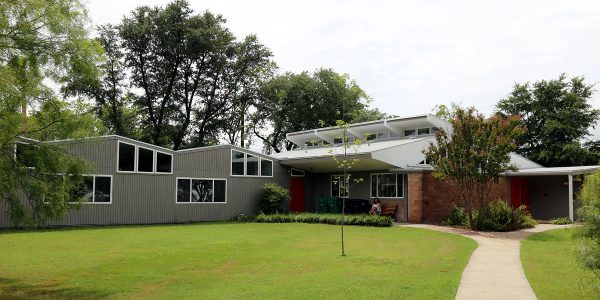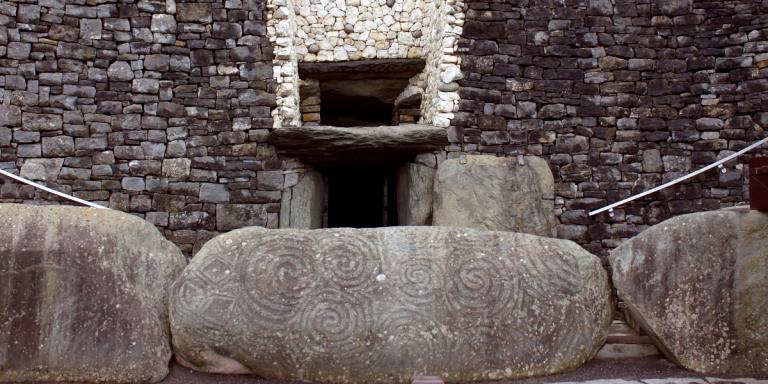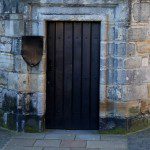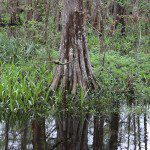This is the text from today’s Sunday service at the Denton Unitarian Universalist Fellowship.
The Science of the Solstice
In the Story for All Ages we learned about the science of the Solstice, and how the variation in the length of the days itself varies based on latitude. The closer to the poles you are, the more you have very long days in the Summer and very long nights in the Winter.
Another bit of relevant science is that the human species originated in East Africa, very close to the equator, where the length of days doesn’t change much throughout the year. About 70,000 years ago, a small group of perhaps as few as 150 people left Africa and moved north, then slowly began filling the world. Every person alive today not of Sub-Saharan African descent is their many-great grandchild.
The migration of early humans and their impact on our religions and cultures today is a fascinating topic, but that’s another story for another time. What’s important today is that they did move north, away from the equator. And that means that at some point, for the first time, the shortening days and cooler temperatures of the approaching Winter became apparent.
Without the ability to precisely measure time, confirming this phenomenon would have been difficult. Perhaps it took several years or even several generations before people were sure that yes, the days were getting shorter. Regardless of how long it took, it had to be troubling. Even the fact that Summer followed Winter may have been of little comfort. People get old and die – perhaps the sun is getting old and dying. What if this time, the sun doesn’t come back? What if this time, the days just keep getting shorter? Is the world ending?
The Winter Solstice was proof that at least for this time, the sun is coming back. The days are going to get longer now. Spring will come, eventually if not as soon as we’d like. It’s not hard to understand why the Winter Solstice is most likely humanity’s oldest holy day, whether those earliest Solstice fires were lit as celebrations or acts of sympathetic magic or both.
The Mystery of the Solstice
Eventually, our ancestors figured out the science of the Solstice. But the mystery of the Solstice remained. If you were here this Sunday last year, you saw a huge photo of Newgrange, the 5000 year-old tomb-shrine in Ireland, which is aligned with the Winter Solstice. On the three days surrounding the Solstice, light from the rising sun shines into the roof box over the entrance, moves down the passageway, and illuminates the carvings on the stones on the rear of the tomb – along with anything placed in the stone basin in front of the carvings. After a few minutes the sun rises further and the light begins to retreat down the passageway. 17 minutes after it all began, the tomb is once again plunged into darkness.
We know that people were buried in Newgrange, but their bodies were not left there permanently. The current evidence suggests that those in the community who died during the year (or some of them, anyway) were placed in the tomb. On the Winter Solstice, the sunlight illuminated the remains, which was believed to send the dead on to the Otherworld. Then the remains were removed and buried elsewhere.
The mystery of the Winter Solstice was powerful enough to persuade the early people of Ireland to spend thousands and thousands of hours constructing and maintaining this massive stone and earth structure. They used it for hundreds of years before they simply stopped coming, for reasons that are even less clear than why they started. But they would not have invested so much time and effort into building something that amazes us even today if it had not been deeply meaningful to them. The mystery of the Winter Solstice remains strong.
On the other side of the Irish Sea is the even more famous Neolithic monument of Stonehenge. Now, I’m a member of a Druid order that traces its lineage all the way back to 1717. Some of my 19th century Druid forebears made a big deal about celebrating the Summer Solstice at Stonehenge. They assumed the ancient Druids must have done likewise… even though Stonehenge had been built, rebuilt, and abandoned long before the first Druid ever walked in Britain. Today, if you fight off 20,000 or so Druids, Witches, and unaffiliated party-goers – and if the English weather cooperates – you can see the Summer Solstice sun rise in the northeast directly over the heel stone and illuminate the center of the circle.
You would also, in my strong opinion, be facing the wrong direction, six months out of phase… because Stonehenge is also aligned with the sunset at the Winter Solstice. It’s easy to imagine a late afternoon procession up the ancient walkway now called The Avenue. Walking northeast to southwest in late December, the procession would face the setting sun for the entire journey. Time it right and you’d arrive just as the sun was sinking below the horizon on the shortest day of the year.
Did the ancient Britons light fires to urge the sun to return? Did they hold an all-night vigil, waiting for the confirmation of sunrise? Was this a solemn ritual? Or perhaps a joyous celebration? We know even less about Stonehenge than we do about Newgrange – all we can do is speculate. But we know the mystery of the solstice was strong – that much is quite literally written in stone.
The mystery of the Solstice was strong in many places, and the Winter Solstice was the favored birthday for Gods and heroes alike. Most of us are aware that early Christians arbitrarily celebrated the birth of Jesus at the Solstice to coincide with the Roman celebration of Saturnalia, and also adopted the Roman customs of feasting and gift-giving.
Today, we’re seeing a revival of Winter Solstice celebrations. Some are among Pagans who are reviving the practices of our ancestors. The Denton Covenant of UU Pagans will be holding our Solstice circle this Saturday evening – it will be a Norse-flavored event. Other Winter Solstice celebrations are among atheists who want to continue the gathering, feasting, and gift-giving of their Christian upbringing, but without religious connotations that are no longer meaningful for them. Co-opting an existing festival worked for the early Christians – it’s working for contemporary atheists too.
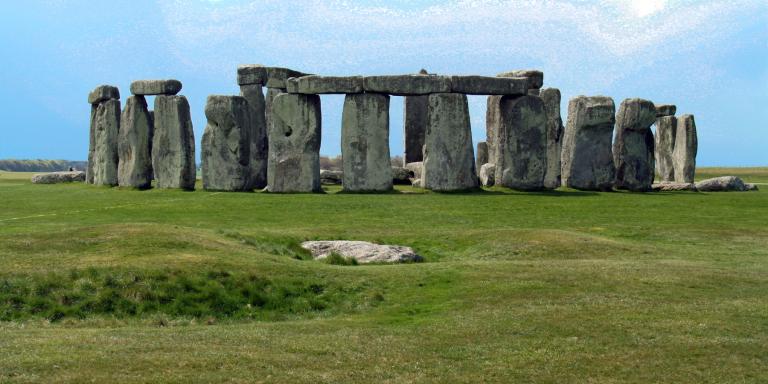
The Metaphor of the Solstice
In our time, the science of the solstice is well-known. And for many in this modern world that expects overwhelming evidence before accepting anything that goes against our preconceived notions, the mystery of the solstice is, well, a little too mysterious to fully embrace. And so the Solstice becomes a metaphor.
The days have been getting shorter for six months. But after the Solstice, the sun rises earlier and sets later each day. Sunrise begins to move northward on the horizon and the sun rises higher in the sky. The worst of Winter is yet to come, but the reborn sun and the returning light serve as proof that Spring is coming, and whatever dark times we’re in will eventually end. It’s a powerful metaphor.
But all too often, the metaphor of the Solstice breaks down in our daily lives.
In Neolithic Ireland or Iron Age Britain – and perhaps, even in 19th century Texas – the Solstice would come at the end of a time of rest. The long hard work of the harvest was done in August and September. The culling of the herds for Winter was done in October and November. The meat was salted, the grain was stored, and the cider was made. The daily labors of life continued – chop wood and carry water does not apply only to Buddhists. But the celebration to recharge everyone’s spirits before the worst of Winter came at the end of a period of relative calm and restfulness.
There is nothing the least bit calm and restful about late Fall in 21st century America.
Those of us in school are getting ready to take semester exams, or to grade semester exams. Those of us who work in a corporate environment are doing our best to hit our year-end goals, so we have a chance at some semblance of a raise next year. The joy of the ancient custom of gift-giving is squashed by the pressure to find the perfect gift. We’re two weeks past Black Friday, the annual celebration of our society’s failure to comprehend the meaning of “enough.” There are family gatherings and work gatherings and church gatherings – even if we enjoy them, they add to our busyness.
Some of us get a break from Christmas Eve through New Year’s Day, and that’s nice. But for those in retail and hospitality, it’s the busiest time of the year. And of course, if you work in a hospital or as a first responder, there are no holidays. Our mainstream society expects us to celebrate new beginnings at the very time when we need to be winding down from the end of the old year.
The metaphor of the Solstice, as beautiful and powerful as it is, can’t hold up against the realities of contemporary American life.
And let’s speak to the elephant in the room. Many of us are looking forward with trepidation not to the astronomical Winter that begins on December 21 but to the political Winter that begins on January 20. Even many of those who voted for the winning party – for reasons I understand though I do not share – are concerned with the character and the priorities of those who are filling the new government. It is one thing to have a celebration to remind us that Spring is coming in just three months. It’s another when Winter is going to last for four years, if not longer.
Solstice: Standing Still
This is not a year to light a candle, sing a carol, and go back to our normal daily business. This is a year to rest in the shadows of the Solstice. The word “solstice” means “sun stand still” – for the three days surrounding the Solstice, the sun appears to stop its movements, before the days begin to lengthen and the sunrise begins to move northward on the horizon.
Can we have our own personal solstice? Can we be still for three days, or even for one day?
This year, let’s not banish the dark. Instead, let’s embrace the restfulness of the dark. Let’s close the curtains, block out the distractions, and get some good renewing, rejuvenating sleep. Let’s embrace the nurturing of the dark – let’s plant ourselves in good soil and get ready to sprout when the time is right.
There’s Good Soil Here
Some of that good soil is right here, especially in our third UU principle of acceptance of one another and encouragement to spiritual growth. Do you need a safe space where you can be who you are? Here it is. Do you need a place where you can express hopes and fears that will not be understood at work or at school or even with your family? Here it is. Do you need a well of wisdom and inspiration that draws from the traditions of the entire world? Here it is.
Fear will not keep you warm during the coming long Winter. Rage will keep you warm for a while, and then it will consume you. Instead, drink from a deeper well. Here we offer the teachings of Jesus, Moses, and Muhammad; of Channing and Murray; of Emerson and Thoreau. Here we offer the teachings of the Buddha and of Lao Tzu. Here we offer the inspiration of Nature and the wisdom of reason.
And here we offer the mystery of the Solstice and the wisdom of our ancestors who built Newgrange and Stonehenge. Those ancestors worshipped many Gods and Goddesses. We will not tell you what to believe about these Gods and Goddesses, but we will encourage you to explore Their values and to incorporate Their virtues into your life. We do not expect you to mindlessly accept the authority of someone else’s religious experience. Instead, we encourage you to have your own religious experiences, and then to do the hard work of figuring out what they mean and what you need to do with them: in your personal life, and in the work you do to make the coming Winter a little warmer for everyone.
The First Winter, All Over Again
The first humans who recognized the shortening days and colder temperatures of Winter must have been terrified. Perhaps they had migrated much further north than they planned, or to a higher elevation, or perhaps that year included an especially severe early cold snap. Even those who had picked up an intuitive recognition of the Earth’s seasons must have worried that perhaps this year the sun would not stop and then return, and Spring would never come.
Spring did come, as it always does. But that first Winter they experienced was very real, and it does not take much to imagine the hardships they went through.
The Winter we are about to begin is very real. We do not know how harsh it will be nor how long it will last, and as always, the unknown spawns the worst fears.
So let us take however long we need – and however long we have – to rest in the shadows of the Solstice. Let’s remember our ancestors – they survived long Winters, and so can we. Let’s plant ourselves in good soil, and prepare ourselves for the work ahead.
Blessed be the mystery of the Solstice. Blessed be the reborn sun. Blessed be this sacred place of refuge and of service.


